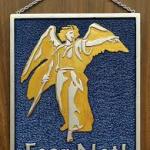 Oh, the More-with-Less Cookbook! How I love this book! “Green” and globally aware before it was trendy, really simple way before Real Simple; a Christian response to global hunger that involved so much more than writing a check to a relief organization.
Oh, the More-with-Less Cookbook! How I love this book! “Green” and globally aware before it was trendy, really simple way before Real Simple; a Christian response to global hunger that involved so much more than writing a check to a relief organization.
Commissioned by the Mennonite Central Committee in 1976 “in response to world food needs,” this cookbook was ahead of its time in its awareness of how personal food consumption is connected deeply to poverty and want in other places:
“we are looking for ways to live more simply and joyfully, ways that grow out of our tradition but take their shape from living faith and the demands of our hungry world. There is not just one way to respond, nor is there a single answer to the world’s food problem. It may not be within our capacity to effect an answer. But it is within our capacity to search for a faithful response.”
(from the preface by the author, Doris Janzen Longacre)
 Even as a really young girl, I enjoyed reading the More-with-Less cookbook. It’s full of wisdom and suggestions for connecting your family’s eating to broader ethical and spiritual concerns, and in a lot of ways it anticipates the “food movement” that seems so contemporary. It advocates “lawn gardening” (less mow–more hoe), and recognizes that things like home food preservation can provide “meaningful opportunities for family members to work together.”
Even as a really young girl, I enjoyed reading the More-with-Less cookbook. It’s full of wisdom and suggestions for connecting your family’s eating to broader ethical and spiritual concerns, and in a lot of ways it anticipates the “food movement” that seems so contemporary. It advocates “lawn gardening” (less mow–more hoe), and recognizes that things like home food preservation can provide “meaningful opportunities for family members to work together.”
Much like Diet for a Small Planet, the More-with-Less Cookbook advocates for a whole-grain, plant centered diet. But it doesn’t advocate for complete vegetarianism. Instead, it suggests a “wise” and “sparing” use of meat; recipes that serve 6 or more never call for more than 1 lb. of meat: a style of cooking that uses meat as a flavoring more than a center-of-the-plate item. (Which is, of course, an anticipation of Michael Pollan’s “eat food. not too much. mostly plants.)
The More-with-Less Cookbook has its faults; it’s clearly within a “frugality-first” mindset, now looks dated when it calls for margarine instead of butter, and has some vintage-style weird casseroles (eg. Spinach Loaf.) But many of the recipes hold up just fine over time (and/or are good for building off of or revising). The Middle Eastern Lentil Soup recipe, for example, is still just about the simplest, tastiest lentil soup I’ve ever had; I make it regularly and it’s a favorite even with my pickier child.
Because I grew up on the recipes from More-with-Less, that food is comforting to me, and that cookbook will always be special to me for first awakening in me the idea that my choices might actually matter to more than just me. They might make a difference in the lives of others. They might matter to God.
They might matter to God.
The More-with-Less cookbook! Check it out. It’s full of gems like these:
“don’t begin gardening and preserving only out of duty to your budget and the world’s hungry, although it helps. Begin it for joy, for healing. Begin it to receive the gift God gave when He placed us in a garden and said, “Behold, I have given you every plant yielding seed…”
Oh, yes. It’s all about eating with joy.
Peace, friends!
repost from the archives











